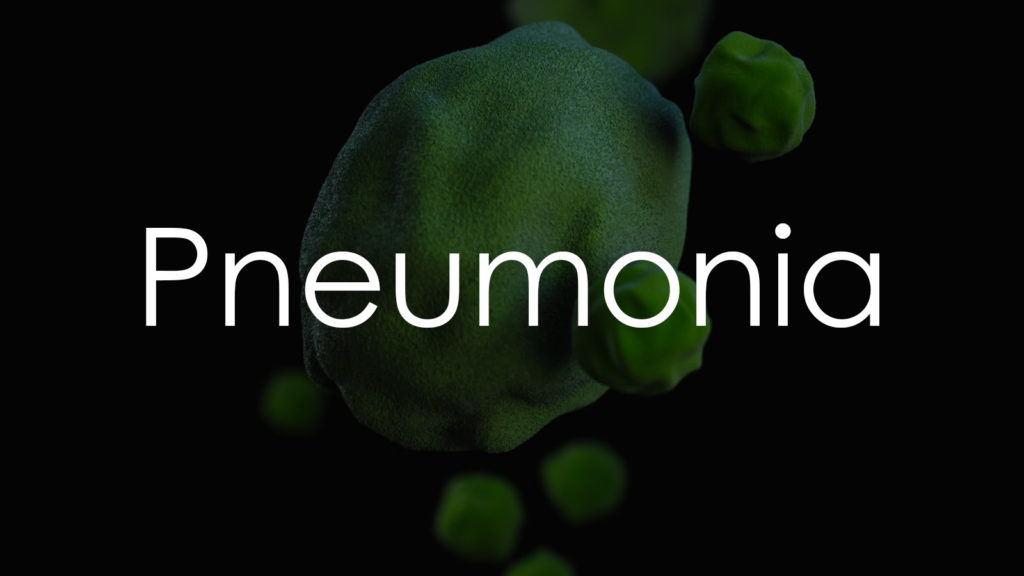Pneumonia, a serious respiratory infection, inflames the air sacs in one or both lungs. This condition, which can be caused by various pathogens including bacteria, viruses, and fungi, presents a significant health concern globally. Symptoms range from mild to severe, affecting individuals of all ages, but particularly dangerous for the elderly, infants, and those with weakened immune systems. This article aims to provide a comprehensive understanding of pneumonia, covering its causes, symptoms, methods of diagnosis, treatment options, and preventive strategies. As pneumonia continues to be a leading cause of hospitalization and mortality worldwide, understanding this disease is essential for effective management and prevention.

Causes
Pneumonia is an inflammatory condition of the lungs, primarily affecting the small air sacs known as alveoli. It is caused by a variety of infectious agents.
- Infectious Agents:
- Bacteria: The most common cause of bacterial pneumonia is Streptococcus pneumoniae. Other bacteria like Mycoplasma pneumoniae and Chlamydophila pneumoniae can cause milder forms of the disease.
- Viruses: Respiratory viruses, including influenza, respiratory syncytial virus (RSV), and SARS-CoV-2 (the virus responsible for COVID-19), can lead to pneumonia.
- Fungi: In certain geographic regions or in people with weakened immune systems, fungi such as Histoplasma capsulatum or Cryptococcus species can cause pneumonia.
- Modes of Transmission:
- Pneumonia-causing agents can be transmitted through airborne droplets from coughing or sneezing, or through direct contact with infected people or surfaces.
- Risk Factors:
- Increased susceptibility in the elderly, infants, and those with weakened immune systems.
- Chronic diseases like asthma, COPD, heart disease, and diabetes.
- Smoking and alcohol abuse.
- Recent respiratory infections or hospitalization.
Symptoms
Pneumonia symptoms can vary from mild to severe, depending on the causative agent, age, and health status of the individual.
- Common Symptoms:
- Cough, which may produce phlegm.
- Fever, sweating, and chills.
- Shortness of breath or difficulty breathing.
- Chest pain that worsens with breathing or coughing.
- Other Symptoms:
- Fatigue and loss of appetite.
- Nausea, vomiting, or diarrhea, especially in viral pneumonia.
- Confusion or altered mental awareness, particularly in the elderly.
- Severe Symptoms:
- High fever and pronounced difficulty breathing.
- Bluish color to the lips and fingernails due to low oxygen levels.
Prompt recognition of symptoms and seeking medical attention are crucial, especially in high-risk individuals, as pneumonia can rapidly progress and become life-threatening.
Diagnosis
Diagnosing pneumonia accurately is crucial for effective treatment and recovery.
- Medical History and Physical Examination:
- Doctors begin with a review of the patient’s medical history and symptoms. Listening to the lungs with a stethoscope can reveal crackling, bubbling, and rumbling sounds during inhalation.
- Chest X-ray:
- Used to confirm the presence of pneumonia and to determine its extent and location in the lungs.
- Blood Tests:
- Blood tests may be ordered to confirm an infection and to try to identify the organism causing the infection.
- Sputum Test:
- Analysis of a sample from your cough can sometimes reveal the cause of the lung infection.
- Pulse Oximetry:
- Measures the oxygen level in the blood, as pneumonia can prevent the lungs from moving enough oxygen into the bloodstream.
Treatment
Treatment depends on the type and severity of pneumonia, the patient’s age, and overall health status.
- Antibiotics:
- If pneumonia is caused by bacteria, antibiotics are prescribed. The choice of antibiotic depends on the type of bacteria causing the pneumonia.
- Antiviral Medications:
- In cases of viral pneumonia, antiviral medications may be used.
- Fever Reducers and Pain Relievers:
- Medications such as acetaminophen or ibuprofen can be used to manage fever and relieve pain.
- Rest and Fluids:
- Adequate rest and plenty of fluids are essential to help the body fight the infection and recover from pneumonia.
- Hospitalization:
- Severe cases, especially in older adults, children, and those with other chronic diseases, may require hospitalization.
Prevention
Preventive measures are important in reducing the risk of developing pneumonia.
- Vaccination:
- Vaccines are available for prevention against some types of pneumonia, including pneumococcal pneumonia and influenza.
- Good Hygiene Practices:
- Regular hand washing and using sanitizers can help prevent respiratory infections.
- Healthy Lifestyle:
- A healthy diet, regular exercise, and not smoking can strengthen the immune system.
- Avoiding Infection:
- Stay away from sick people when possible. For those at high risk, wearing masks and avoiding large crowds can reduce exposure to infectious agents.
- Managing Chronic Diseases:
- Effective management of conditions like diabetes, asthma, and heart disease can reduce the risk of pneumonia.
By integrating prompt diagnosis and appropriate treatment with preventive strategies, the impact of pneumonia can be significantly mitigated.
Conclusion
In summary, pneumonia remains a major health challenge due to its potential severity and widespread impact. Effective management of pneumonia requires accurate and timely diagnosis, followed by appropriate treatment based on the causative agent. Antibiotics, antivirals, and supportive care are key components of treatment, depending on the specific cause of the illness. Prevention plays a critical role, with vaccination, good hygiene practices, and a healthy lifestyle being primary strategies to reduce the risk of developing pneumonia. Public awareness and education about this disease are crucial, especially in preventing serious cases and controlling outbreaks. Ongoing research and advancements in medical science continue to improve the understanding and treatment of pneumonia, aiming to reduce its global burden.